I’ve visited Bali..hm…I think 7 times so far and I’ve loved it every time. This guide of mine is packed with most of the things that you need to know before vising the “Island of gods” and surfing there. If it’s going to be your first time – read it whole and if not – I’m sure you’ll still find some useful tips and trick or at least take a walk down the memory lane. There is some geography and history added at the beginning to help you understand where you are going, then we get to the juicy part… anyway… here is the index:
INDEX (clickable)
1. Indonesia & Bali
Republic of Indonesia
Capital: Jakarta
16th largest country in the world with 1,919,440 km2 (5.600km2 Bali)
229 million inhabitants (of which Bali 3.5mio)
Currency: Rupiah (IDR)
Time: from UTC +7 to +9
The international calling code: +62
A Quick Lesson In Indo Geography
Indonesia consists of 17,508 islands, of which about are 6,000 inhabited. It lies just on top of the equator – part of the country lies north of it and part more to the south. Five of the largest Indonesian islands are Java, Sumatra, Kalimantan (Borneo), New Guinea and Sulawesi. The highest peak is 4.884 meters high Puncak Jaya in Papua and Toba in Sumatra is the largest lake with 1145 km2. Indonesia has over 150 active volcanoes and has also recorded some of the most violent volcano eruptions of all time (Krakatoa, Tambor, Toba). But on the other hand Indonesia can say “Thank you!” to all these numerous volcano eruptions for a thick cover of volcanic ash and therefore extremely fertile soil.
Climate: Tropical with rainy and dry period.
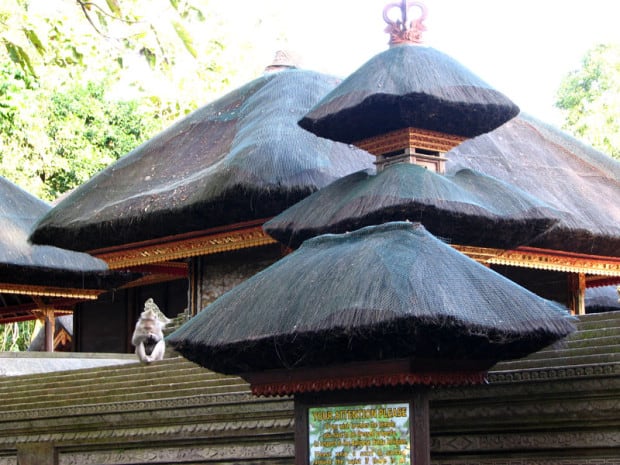
Language and religion
Indonesia is the largest Muslim country in the World. This means by the number of residents who declare themselves Muslims. Indonesia is not a Muslim country like Iran for instance (with strict religious laws etc…at least as far as I know). And then in this largest Muslim country we have Bali which is almost 100% Hindu. Wherever I went in Indonesia people were really nice and friendly but I think you can feel the difference when you come to Bali where people are just extra mild and gentle.
The official language is Indonesian, in addition, about 300 ethnic groups in the aforementioned 6,000 islands speak a wide range of other languages and dialects, which means that most of the time you will do not understand anything they are saying.
What is very nice for us surfers in Bali – 50% of Balinese people (this is just my over the thumb assessment) speak very good English. Not only do they speak English. Signs, advertisements, names… are also very often in English. Bali sometimes looks like a former English colony which is not, English and is more a result of tourism. In addition, the Indonesian language is quite simple and easy to learn and quite a few immigrants can speak it within a year or two and talk to the locals in their language. Of course only as long as the locals don’t switch to one of their many dialects. And since we are also mentioning religion here – Bali is called the island of thousand temples. Temples are everywhere. Going down the street – a temple, swimming in the poll – a temple, go to the gas station – a temple, seated in the restaurant – table is next to a temple.
They are nice but once you have seen one you have seen them all, they are quite similar. And since I’ve mentioned colonies, Bali was not English but more a Dutch colony. And it deserves a few words about its history.
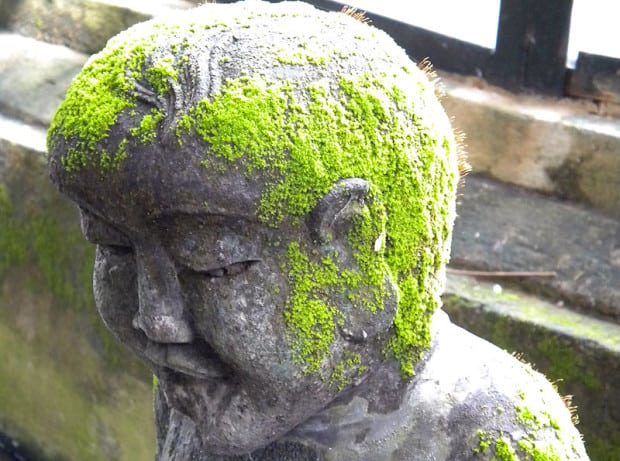
Bali History
One interesting thing from the history of Bali: As the population of the island looks mild and friendly, their history is as violent and bloody as it can be. They particularly had lots of bad luck with the Dutch. First contact with Europeans happened at the end of 16 century. The Dutch used the “divide and rule” principle to rule Bali and conquer it somewhere between 1840 and 1890. Dutch attacked the Balinese kings twice and both times the unequal fight did not end until all the Balinese were killed. Kings and their followers did not want to surrender under any circumstances and fought the unequal fight to the bitter end.
During WW2 Japan occupied Bali, but when the war was over the Dutch were more than willing to return to their positions. They were greeted by Bali national hero Gusti Ngurah Rai (Bali international airport is named after him) armed with Japanese weapons that were abandoned on the island when the Japanese left. Unfortunately Balinese lost against the Dutch for the third time in a row and the whole army and their entire resistance movement was deleted.
These events were followed by various “not so interesting ones” which lead to Bali becoming a part of Indonesia.
2. Bali As A Surf Destination
Indo. Indo trip. Indo style waves. Indo barrels. These phrases are so well known among the surf community that they instantly tell you where in the surf world lie Indonesia and Bali. Where? Yeah, right there at the top of the world surf destinations. Bali is where all the pro surfers come to surf during the summer months when there are no competitions on ASP tour. Here more than half of surf movie material is recorded. This is the source of those mouth watering photos that litter the world surf magazines.
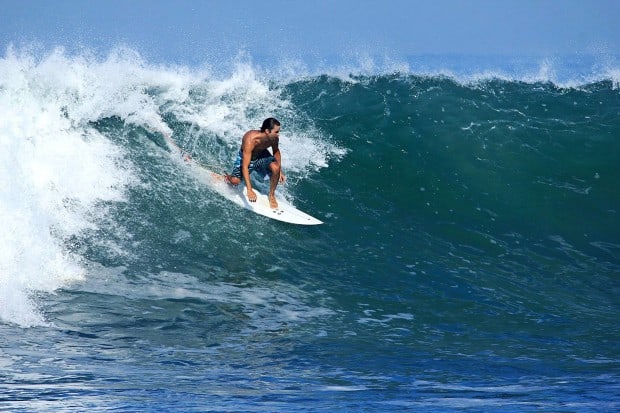
But what is the reason for all this Indo surfing madness?
Why is Indonesia so good for surfing?
Exposure to an open, empty, continuous and almost infinite Ocean directly towards the roaring forties (roaring 40’s is the latitude in the southern hemisphere, where most cyclones and storms that send constant waves towards north are formed). Because of the large distance between the roaring forties and Bali swell lines coming here are the most organized, clean and powerful lines you will ever find. This is some serious long interval swell. 100% clean groundswell waves without any preservatives. Large distance from the roaring forties puts Indonesia and Bali just a little south of the Equator which means hot water and warm weather. This means surfing in cotton t-shirts and boardshorts, no neoprene wetsuits, only tropical wax under your feet. However, you might want to put on some reef booties for the numerous coral reefs that lie under most of Balinese surf spots. Or you can be cool and say things like: “Surfing with booties is like having sex with a condom!” and possibly develop a serious infection of all the reef cuts that you will receive.
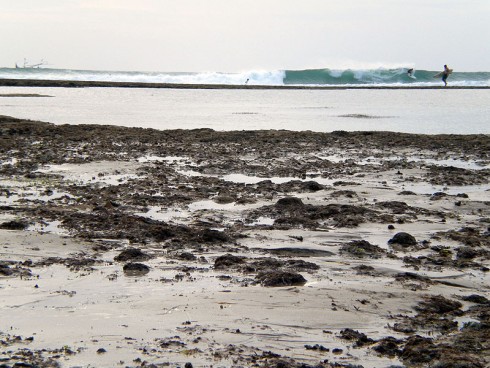
In addition to waves and temperatures Indonesia and Bali are cheap yet very comfortable place to spend your long surf vacations. Without going bankrupt. And it’s just enough exotic and different that you will have plenty of stories to tell when you get back home. What can you tell about your average camping weekend back at home? How much did you drink and that’s it. But here the exoticism and the crazy situations that happen almost every day can easily be turned into a story or even into magazine or surf movie material. People are interested and fascinated by surf places that are different, exotic and magical. Everything your local surf spot is not. And the more far and weird places you surf the more soul you’ve got :).
But great waves can be found all over Indonesia, why is Bali so special that everyone falls in love with it?
High concentration of the world’s top surf spots and people. Padang Padang, Uluwatu, Keramas, Changgu … these are spots. Wayan, Made, Nyoman and Ketut – these are the people. Yes, Balinese only have four different names which are the same for women and men :). Really! But what is more important is their kindness and endless smiles.
I think this has something to do with the fact that Bali is almost 100% Hindu. You can not be in a bad mood when every day you smell incense, sweep the grass under the palm trees and make small containers out of palm leafs for gifts for the Gods.
No mater how touristy Bali gets – these two things remain the same: waves and people. Third Bali plus point, at least for most people, is actually a result of the first two. Today, Bali is the most developed tourist island in this end of the World and therefore the most comfortable and tourist friendly. Whatever you need you got it! Mac, KFC, Dolce & Gabana, Starbucks, massage, transport, hairdressing, manicure, surf shops, top end restaurants, Carrefour, all the top surf brands, Apple stores and so on. There is no need spend your meals over plain rice and pieces of run over chicken as in some other more exotic countries. Or at least you have a choice. Rice and chicken is pretty damn good by the way.
I know some people will say Bali is too developed, to much tourism, crowds… If you like solitude and wilderness then you might be a little disappointed by Bali and you might want to jump over to the island of Lombok or maybe even Mentawai islands.
3. Bali Weather
Tropical climate means no cold winters and hot summers but rainy and dry periods and things like that. First the facts.
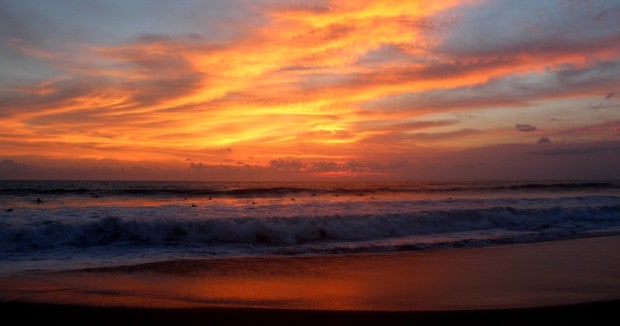
North of the equator summer is summer and winter is winter. South of equator it’s the opposite. Winter is summer and summer is winter. Looking from our northern climate system, of course. At the equator, the rainy period is during summer and dry period is during winter.
So, to put these facts into perspective – in Bali, which lies south of the equator, the rainy period starts when our winter starts – this is when they have summer and the dry period starts when our summer starts – this is when they have winter. This is related to changes in tropical rain belt, which lies over the equator and slightly changes its position and moves a little to the north of the equator and a little south of the equator as the seasons change.
The aim of all this writing? If you want to be in Bali during the dry period then you have to go there during our summer.
The difference between dry and rainy season is only minor when it comes to temperatures. Summer is only a little warmer and the sea is also warmer (30C) at that time. The more important difference is the amount of rainfall. During the rainy season it rains almost every day and the result is more moisture in the air (and muddy roads). Humid heat is harder to stand. Besides that streets get flooded, dirty water runs to the sea, lineups near towns are full of trash etc… Due to recent weather changes or natural cycles (I am not sure if we can really tell the difference) lately these seasons are not that exact as they used to be. At least locals say so. So you can have more rain during the dry period and also nice weather during the rainy season. But generally things stand as explained and don’t rely too much on these exceptions.
When exactly is dry and when rainy season in Bali?
Dry season: from April to September
Wet season: from October to March
Otherwise, the temperatures throughout the year stay pretty much the same and are rocking between 26 and 30 degrees C which is about 78-86F. The major problem is the humidity. Even during the dry season, the atmosphere is not exactly pepper dry. So even not so extremely high temperatures are more difficult to endure. It usually takes a couple of days for you to get used to the humidity. And one more thing – beware of the equatorial sun. It’s really burning from the top down, right over your head.
Our test to figure out if you are accustomed to the Bali climate – when you are in the cold shower (cheap rooms don’t have hot water) and you say “Brrrrr …” instead of “Aaaaaahhhh…” you are acclimatized :). Once you start to walk around in long pants and a sweater then it’s probably time to go home.
So much for the weather in general.
PS: recently I went to Bali in late October/early November and weather was sunny all the time…
4. Weather For Surfing In Bali
Top surfing season in Bali is the dry season from April to September with peaks in summer months (July and August). Why? Because at that time the Southern Hemisphere has winter and the cold air reaches higher towards the north. There is more mixing of the warm and cold air masses and these events are more intensive. As a result there are numerous cyclones and storms over the Indian ocean which create more and higher waves. Predicting waves in Bali is not a very complicated science – just check the roaring 40’s and if there is a cyclone/storm over there that’s it – the waves will come. Some more local knowledge is needed to choose the right spot which depends on the tides and winds.
The basic wisdom on the winds in Bali is this: during the dry season surf the spots on the west coast of the Bukit peninsula, because the winds there will be off-shore. During the wet season surf the east coast of Bali because during wet season winds blows from the west and spots on the east coast will have off-shore wind. But as I already said – weather patterns change and you can never be 100% sure.
The second rule is the beachbreak rule. Surf spots like Kuta beach, Brawa, Changgu … in the morning, before the daily thermal onshore blows them out. During the day the wind will usually make these spots to choppy to be really good.
Expected normal height of the swell in Bali:
during the dry period of 2.5-3.5m,
during the wet period of 1.8-3.0m.
In general – don’t worry too much about the waves being completely flat for a long time, this doesn’t happen very often. At least Greenballs will work.
5. Bali Surf Forecast
For the Bali surf forecast check magicseaweed. I like it because lots of Bali spots have Eyeball report – this means someone actually goes to the beach adn takes a photo of the waves and conditions and uploads it to the MSW and writes a short description about the conditions on that particular day. Great stuff! This way you can quickly find out what for instance a 2.5m swell forecast looks like. Kuta Beach report can be waist high fun wave. Lots of times the predicted swell well height and actual height of the waves on the spot are significantly different.
6. Surf Spots
The main part of surfing in Bali is surfing the Bukit peninsula. Bukit peninsula lies in the south of Bali and is sprinkled with more or less known surf spots. It is a little version of the North Shores 7 mile miracle. From south to north spots go something like this: Greenballs, Nyang-Nyan, Uluwatu, Padang, Impossibles, Bingin, Dreamland, Balangan.
Then from Bukit to the north you have Airport lefts and rights and Kuta Reef, Kuta Beach with various peaks, Brawa, Changgu, Balian, Medewi and probably a whole bunch of spots in in between. On the other side of the island you have spots like Nusa Dua and Keramas… These are the main spots in Bali.
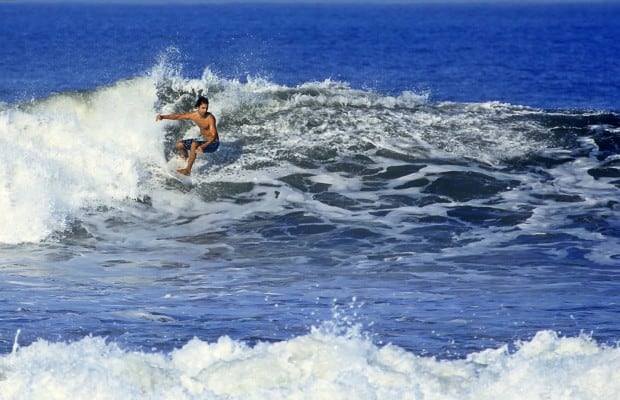
For more detailed info on these spots take a look at some surf guide, I won’t go into much details. I’ll just tell you the useful stuff that surf guides don’t mention.
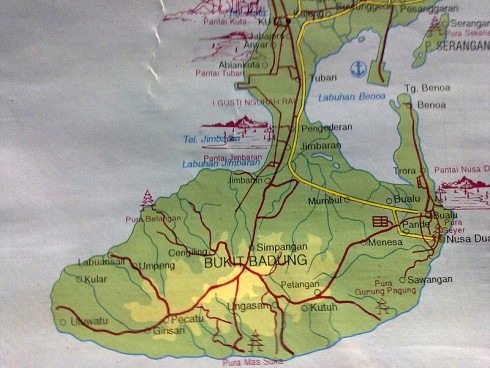
Remember that most of these spots are reefs. And that most of these reefs are coral reefs. And that most of these coral reefs are not really those forky spiky coral reefs. But still – coral reef are not the best place for surfing beginners.
100% pure beachbreak without any stones is just Kuta Beach. Because it is so beginner friendly and because it lies in the middle of Kuta – Kuta beach is always crowded. But it can still be a really fun wave to surf.
Then you have Brawa beach, Changgu and left peak on Dreamland that are mostly sand bottom but there are some rocks to kick into when you are walking in and out from the water so be careful. The right peak on Dreamland is already rock bottom mixed with sand. Rocks are big mushroom shaped rocks so be careful, especially surfing the left on that peak. The rest of the more known spots are reefs.
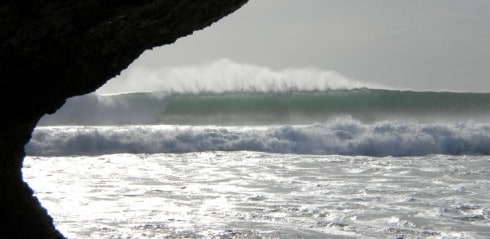
Balangan is generally considered to be the first reef to be surfed if you are a beginner. This is mostly connected with your chances of hitting bottom if or better – when you wipeout. On Balangan they are not very high. Otherwise it is a fast left wave that requires lots of speed and a high line to make it over the sections.
But on a high tide and not too much swell any reef can be surfed without too much worries if you master the basic surfing skills – duckdive, takeoff, bottom turn and riding the wave. Bigger problem than the reef under the water will be the crowds on Uluwatu and the speed of the wave on Balangan.
Let me just state that again – this means if you surf on high tide and with not to much swell. Low tide and bigger swell makes all the reef not very suitable for beginners.
While people surf reefs on low tide all the time the basic rule of surfing reefs is still – always surf on high tide. If you follow this rule it becomes a problem to find a spot that works on low tide. Because beachbreak Kuta Beach also works on high tide. On low tide it is just a long closeout. The only low tide spots nearby are Brawa beach and Dreamland. Problem with Dreamland is that it only works on a larger swell (over 8ft) – if the swell is smaller it’s more of a pancake. Then you have reefs in front of Kuta and around the airport: Kuta reef, 2nd reef, Middles, Airport left, Airport rights. Some of them also work on low tide, just ask the boatman. I like Kuta reef and Airport right best, but I did have some crazy good rides on Middles as well.
For most of the reef spots it is also useful when someone tells you where to go in and out of the water. Here is some 1st hand advice:
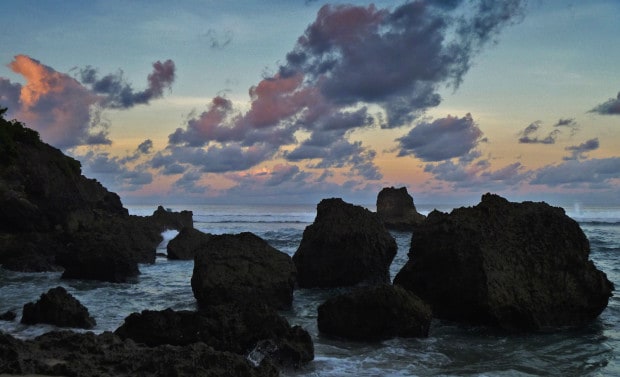
Uluwatu: you paddle out from the cave or from the beach on the left (go through the hole in the left wall of the cave on low tide). Walk as far as you can towards the waves and when you start paddling paddle out and towards the right. There is also a current that will take you to the right even if you don’t want to :). Watch out for this current when you are returning from your surf session. Make sure you have enough room on the left when coming in so you can hit the beach of the cave. If you miss them you can come into a nasty situation and will have to make another paddle out and try again. Left from the cave you only have cliffs and getting out of the water is impossible. If you surf Uluwatu at low tide just walk over the reef.
Greenballs: on high tide small beach under the stairs where you go into the water disappears and waves break directly into the stairs so getting out of the water can be tricky. Surf midtide. To get to the lineup use the obvious current. It looks weird though. And on the top of 300 and something stairs buy a Pocari Sweat to quench your thirst from a friendly old guy selling it.
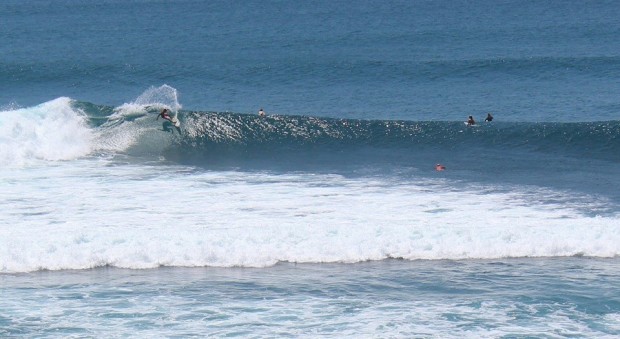
Impossibles: paddle out from a small beach called Padang, paddle out and then towards the right. On anything else than a small swell paddling directly over the reef is a bitch. Even if you wipeout surfing impossibles and get caught inside by a set you will quickly find yourself drifting towards Bingin.
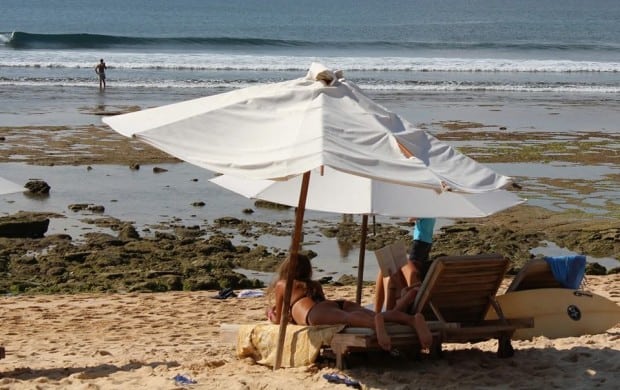
Balangan: on high tide paddle out on the left side of the beach, you will see that there is almost no foam there. At low tide walking over the rocks also on the left side of the beach until you get to the end. Wait for a lull between the sets and quickly paddle out.
Kuta reef, 2nd Reef, Middles, Airport left, Airport right: for these spots you will need to hire a boat to take you to them. You can find one if you take the first street to the right towards the beach at the end of Kuta Square. Pack light so you are ready to surf because you can not leave your stuff on the boat. Boat comes and goes every now and then and you wave when you want to get on, you can also change spots. Price is 50.000IDR for all spots except Airport right which is 100.000IDR.
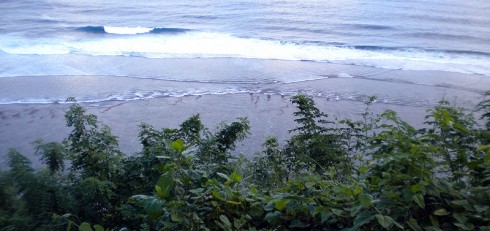
360 Guide Recommends
Expert Spot: Uluwatu, it’s like a sk8 park – something for everyone.
Intermediate spot No. 1: You have to catch it on the right day but when it works Brawa can be very very good. It’s also one of the rare spots that works on low tide.
Intermediate spot No. 2: Medewi, if the swell is too big for Bukit, go to Medewi. It is a mellow wave and it is sheltered a bit from the swell by Java.
Beginner spot: stick to Kuta Beach, it’s the safest place to learn to surf.
“OFF THE BEATEN path spot: go to Uluwatu but then paddle all the way to the left to the peak called Temples. There are not a lot of people there because it takes a while to paddle there and people are to lazy to do it. Or if the swell is small go surf Greenballs.
7. Surfing Dangers
I already mentioned the first rule of surfing reefs for beginners – always surf at high tide, this way you will never hit bottom. Apart from the reef and your fellow co-surfers in the water (check out the crowds section) there aren’t any real dangers in the water, but still you might find the following:
- At Kuta beach the water is not always exactly clean.
- Balian, which is a rivermouth wave, is probably not the best spot to surf after the rain. Here there were even a few shark attacks.
- There is a slight chance that you will meet a very poisonous sea snake. Luckily these snakes are very shy and swim away quickly. Cross your fingers that your particular snake is not a brave exception.
- Use sunscreen, lots of it. Or you will quickly turn into a well done steak.
How To Clean and Take Of Reef Cuts
If you can not express your love for the reef any other way that by hugging it then this is the reef cut cleaning advice. The wound should be cleaned as soon as possible. The first thing you can get your hands on when you exit the water is fresh water and a lime from a nearby warung. Wash the wound with water and get half of lime and clean your wound with lime juice. It will sting as hell but you need to kill the bacteria living on the corals. Also make sure you have cleaned out all the dirt and pieces of coral or your cut will get infected for sure. Some people even say use a toothbrush to get everything out. Lime juice can be replaced with alcohol pads and Iodine. Or maybe just use all three of them.
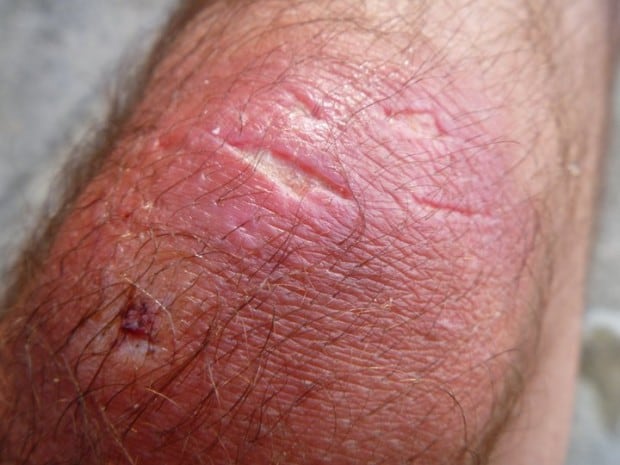
Equally important as the initial cleaning is taking care of your cuts afterwards. Warmth, humidity and dirt are ideal environment for your cuts not to heal properly. Everyday surfing also does not help. The usual result is that small cuts are in time turned into big holes (ulcers). Not good. So make sure your wounds are cleaned and protected all the time. It is really hard to get plasters that don’t come off in water, almost impossible. The spray on plaster kind of works on places that don’t move a lot. But the best thing to use is Chinese medicine called Tieh ta yao gin or also Die Do Yao Jing. It’s a brown liquid that you can buy in Bali pharmacies and it looks like this:
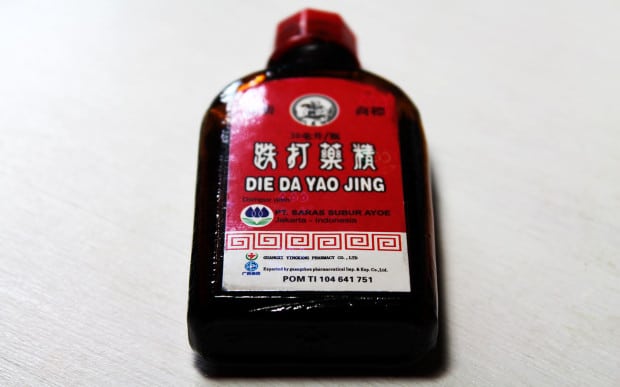
Use a cotton bud or even your finger to cover your cuts with this liquid. Wait till it dries and repeat the process until you get a good brown layer over your cuts. Do this EVERY time you get out of water. The medicine will disinfect your cuts and prevent ulceration. Best thing to use for sure!
If your reef hugging resulted in more that just a boo-boo and you need medical care then in my experience the most top shit hospital is BIMC Hospital (Bali International Medical Center). You can find it, if you go from the main roundabout in Kuta (at Bali Galleria) towards Sanur and you will soon see it on the left side of the road.
8. Locals and Crowds
Crowds are a problem at any well-known surf spot. Great waves, warm water, friendly people, relatively easy access = crowd. The number of people in the water is constantly high at all known spots in Bali. What varies over time is the ability of surfers in the water. This means that in my experience with the same number of people in the water in the middle of the top season on Uluwatu it will be much harder to get a wave than with the same amount of people before or after the top season. During top season you will see ASP WCT Pros paddling past you and during low season you will see Japanese dudes on Minimals.
When the crowds are high and competitive both can be aggressive – locals and tourists. With tourists it’s either they are here for two months and feel they are already 99% locals or they are here for 14 days and they need to catch as many waves in this time as possible.
Locals surfers are actually not very aggro. Firstly there are not so many local surfers as you would expect because of the ideal surfing conditions. And secondly most of the time they are nice and sporting big smiles in and out of the water. But they do know their spots like the back of their hand and they do catch a lot of waves with that mix of “I catch waves because I’m the best surfer in the water and this is my home” and “Fin free top turn for the white tourists to see me” attitude. And they drop in on you. But if you show some respect, some surfing ability and talk to them a little by the time you finish your sessions you will be friends.
How do I get rid of the crowds?
Surfers are like sheep, they go where other surfers go, they go where they see people in the water etc… So if you want to escape crowds check out both off-the-beaten-path spots, do some own research, and get up early!

9. Surfing Equipment For Bali And Indonesia
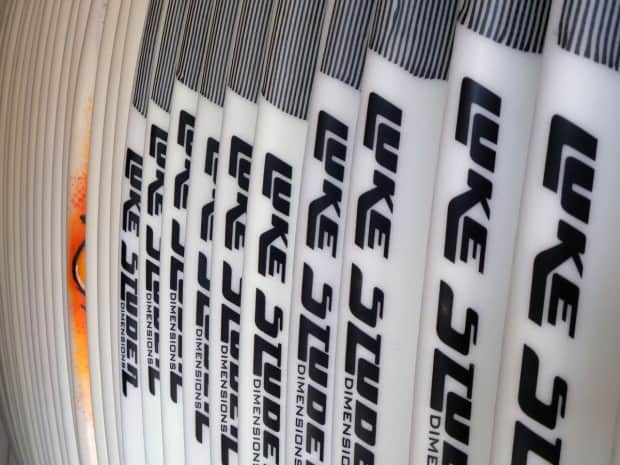
Surf board
This depends on your knowledge of course. Just don’t bring only your small wave doughnut board and you will be fine. You will need some tail and rail to stick to the wall of the wave. Also – remember to clean your board of any cold water wax because that shit will be slippery as a banana peal in the tropical waters.
Wetsuit
Boarshorts. For the dawn patrols and the second half of the dry season when the water is a bit colder get a 1mm top. If you get cold really quickly then get a shorty. In hot sun use a rashguard to protect your skin from the sun. People also use ordinary cotton t-shirts for surfing but they are not as good protection against sun as a lycra rashguard. They do make you look cooler :)
10. Surf Shops And Shopping
At least in the most populated part of Bali – Kuta there are hundreds of surf shops with almost any brand you can think of. They are well stocked with everything you need except maybe they are but thin on womens surf gear. Otherwise – believe it or not – they even have Rip Curls battery heated wetsuit so even if you are buying wetsuits in Bali you can usually find what you want. WTF would anyone need a heated wet in Bali is beyond me :)?
What about the prices? How cheap is your shopping depends on the exchange rate but in general I can say that Bali is no longer the complete surf shopping Mecca that it used to be. Prices are in the normal range and nothing to write home about. But it does pay off to check the numerous promotions and sales where you can find some really cheap things. There are a couple of outlet shops on the road that leads from Kuta to Bukitu (Billabong, Hurley, Surf wearhouse…). There is always a sale of some kind also in the shops on Legian street.
Should I Buy a Surfboard in Bali or Bring One From Home?
If the airline doesn’t charge you extra for the surfboard then bring your own. If not, there are plenty of quality and not so quality boards to be found in loads of surfshops all over Kuta. Some bargaining skills will help you get a better deal but don’t expect a mad cheap deal as you can if you are going out to eat (check eating out). The general belief is that local shapers are not exactly the best in lamination and therefore Bali boards are more sensitive to dings as lets say Australian surfboards or boards from Hawaii. Is this an urban legend or not – I do not know. But I can tell you that Bali ding repair guys are No. 1 in the world.
The best ding repair in the world is in Kuta. In 90% of cases you will not be able to find where the ding was in the first place because they will even paint your ding fix with a suitable shade of yellow, if necessary. So when you are in Bali make sure you fix all your old dings. I suggest Naruki surf shop on Jallan Benesari for buying boards and ding repair but I am sure that there are many others that do the job. Dings can be fixed in less that half a day if you ask (and if they are not extremely busy)!
11. How To Get There
By plane :)! For flights from Europe check Emirates, Etihad, Qatar (best for me!), Singapore, China and KLM airlines. For flight from the U.S.A. and Australia I am not sure. Usually it is cheaper to fly to Jakarta and not directly to Bali. From Jakarta to Bali, and for most of the flights in Asia check AirAsia – this is the Asian version of Ryanair. For local flights also check Lion Air. They have some problems processing foreign credit cards so if it’s not working try booking over tiket.com. One more option is to fly to Kuala Lumpur instead of Jakarta and then from there to Bali. There are lots of daily flights to Bali from Kuala Lumpur.
12. Prices
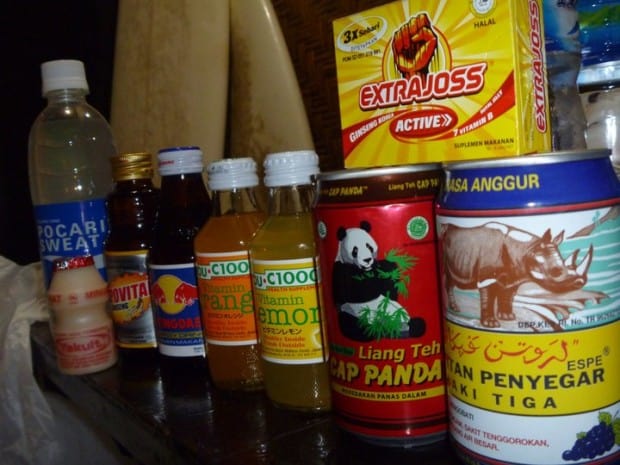
Plane ticket to Bali with all the charges comes between €500 and €1000 per person. Depending on the season, time of departure and how flexible are you.
New surfboard from €350 on
Ding Repair 20,000-30.000idr for smaller dings
Mie goreng and nasi goreng – from 7000idr on, usually 15,000, but also 30-40.000idr in more expensive restaurants,
Juice, smoothie – from 7000idr on, usually around 16,000
Bintang beer (local) – 25.000idr
T-shirt in a shop – from 110.000idr (sales) on
Bintang t-shirt on the street – 20-30.000idr
Rent a scooter – 20/25.000idr per day depending on whether you get an automatic or not, for how long do you want to hire it, and how good are your negotiation skills
Rent a car – from 100-200.000idr/day on
A good dinner for two with drinks 70-120.000idr
1.5 l of water, 2-3.000idr
Hammock – 180.000idr etc. …
Because of the huge competition Kuta is cheaper than the rest of Bali and other islands. Another tip – Bali is really cheap if you use things that are intended for locals. If you eat in their restaurants, if you’re buying things that are made in Indonesia, etc… If you go to places that are meant for or owned by foreigners prices quickly follow those in the west.
An interesting example of this is Nivea cream which is made in Indonesia. It is as much as 5 times cheaper than some other cream that is not made in Indonesia and has to be imported. And so on …
Then there is the bargaining. More or less all the prices are negotiable (except in stores). Less flexible are the prices of accommodation, the most flexible are the prices in street shops.
The first price you will hear is a result of a quick assessment of your looks (are you already sunburned and how are you dressed) and the thickness of your wallet. A fact that you knocked off 50% from the 1st price still does not mean much. Maybe it was 500% higher.
Therefore – initially buy as little as possible and wait to get a sense of how much things costs. Then it gets much easier. And another thing – use your feet. There are thousands of shops and the competition is enormous. When they see that you’re leaving, your offer is suddenly acceptable.
13. Food, Drink And Eating Out In Bali
Kuta Bali is a very cool place to eat outside. Good local food mixes with a full range of Asian cuisines, western cuisine, French, Italian, Australian, and everything in between. Most of the meals range from ridiculously cheap to affordable. Of course you can also spend a fortune if you want to. What I like the most is that the entire time you stay in Bali you don’t have to cook once. When you get hungry you just got to the restaurant of your choice an fill up. No wasting time cooking and cleaning.
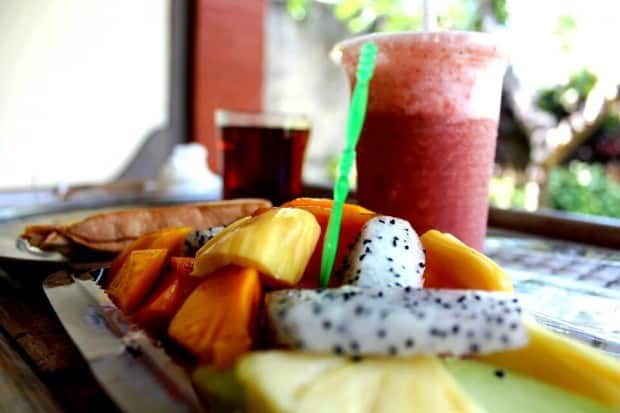
Things You Must Try!
First – try as many delicious fruit juices and smoothies you can get your hands on (I recommend no ice and no sugar). Then try local favorites Mie and Nasi Goreng. It is also hard to escape from jaffles – toast with bananas of eggs. Then try pancakes with banana or pineapple, honey, ice cream.
For more serious meals go after fish steaks (tuna, mahi-mahi, butterfish, swordfish …). When it starts getting dark head to the beaches of Jimbaran for their famous sit in the sand on the beach and eat delicious sea food restaurants.
Thai food is also very good. And if you are at least a little organic, vege and healthy eating oriented you MUST go to Zula restaurant in Seminyak.
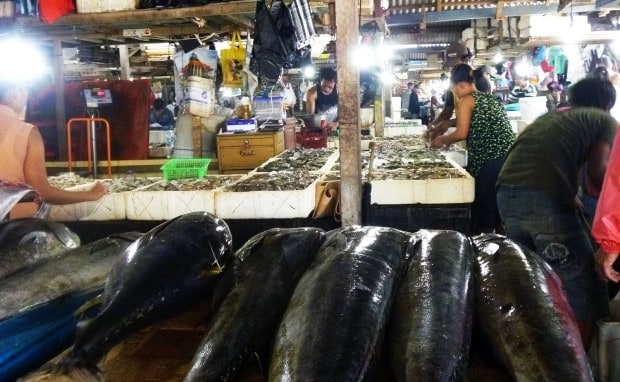
Things I Was Sorry I Tried :)
Beware of the already prepared foods that stay out in the air all day. I had a not very nice experience with some eggs.
Fresh coconut drink is also not anything I would miss a lot.
And if you are not a fan of spicy food make sure you ask if what you are ordering is hot.
14. Sleeping And Accommodation
Prices of accommodation in Bali range from a few bucks a day for a room for two all the way to a few 100 bucks. As mentioned before – if it’s owned by foreigners or built for foreigners then the prices can easily be compared to those in the west. But lucky for us there is a whole range of rooms that cover all prices in between.
Things that influence the price:
- fan / air-conditioning,
- cold / hot water,
- no swimming pool / the pool,
- how new is the building.
Although the last one is not a very strict rule. Sometimes old stinking hole costs more that a new one just because it has air conditioning and pool, even if it smells moldy. In general – twalk around and check out at least 5-10 different rooms.
Should You Make A Reservation Before You Go To Bali?
Most of the time you can not make reservations in low to mid end accommodations. Even if they take your reservation they will give your room to the first person that wants it. But don’t worry about rooms being full, there are so many places to sleep there is no way you will be left in the street. Places that take reservations and have websites are among expensive ones.
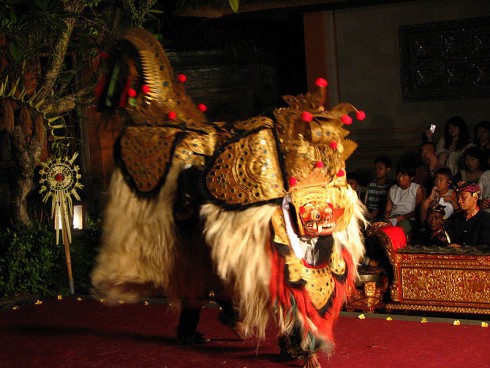
Bali Accommodation Price Guide – What Kind Of Room You Get For What Price (2 people + breakfast)
– 50.000idr: old wooden room in the village without anything or a really really crappy room in Kuta
50-100.000idr: a room with fan and cold water, probably needs some renovation
100-180.000idr: a pretty cool new room with fan and cold / warm water, sometimes pool is also available for this price
180-250.000idr: air conditioning, hot water, pool.
250,000 or more: then comes the TV, fridge, nicer equipment, bigger rooms etc.
Where To Sleep In Bali?
If you like to party, get drunk, meet girls or boys, dance, throw up and eat mushrooms then stay in Kuta. It’s the most happening place, some rooms can still be quite peaceful if they don’t face the streets.
Legian is a bit further from Kuta to the NW. It’s more peaceful that Kuta.
Seminiyak, even further to NW is the most peaceful and you can still reach Kuta in 10 minutes. But it is a little bit more high end place.
Prices follow the noise…or better – run away from it. Kuta is the cheapest, then Legian and then Seminyak.
If you are going to surf only reefbreaks of Bukit then stay there and avoid the traffic nighmare. Thats 3/4 hour saved each way every day… depending on the crowds on the road and your driving skills :). Downside to Bukit is that not much is happening there and there are far less places to eat and shop there.
15. Transportation – Getting Around Bali
Rent a scooter and ask for surfboard racks. Everything else (read a car) is a traffic nightmare.
Bali driving tips
Drive on the left.
If you have not yet driven a motorbike – accelerate slowly and with feeling. Almost all beginners put their bikes to the pavement once or twice.
Pay attention to the traffic in front of you. Those who are behind must be careful of what those that are in front are doing.
Use your horn and your arms to signal what you are doing.
There are lots of one way streets in the cities. There are also narrow streets called Gang (Poppies Gang I & II for instance) where a big problem arises when two cars meet. Learn to drive your bike on the street, on the pavement, among shops and over obstacles – this will greatly speed up your journey :)!
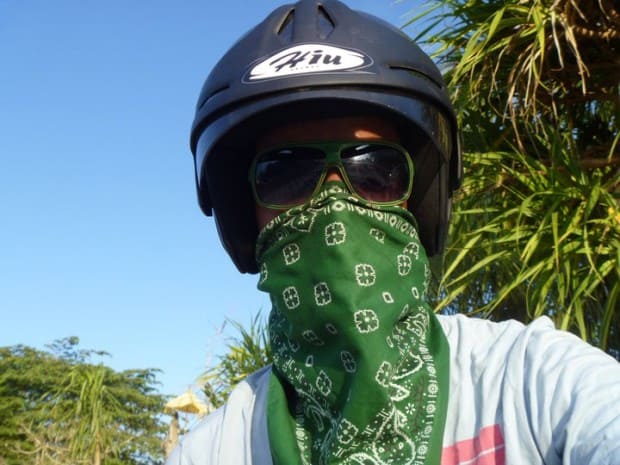
Kuta orientation Crash Course
The main roundabout that connects Kuta with other parts of Bali next to the Bali Galleria Shopping Center. This is the one roundabout that has a huge statue in the middle of it (it’s not the only one with the statue). To go to Bukit go past the Bali Galleria toward south and then turn right after the McDonald’s and KFC restaurants, this road is also where a few surf shop outlets are.
If you take the Sanur exit on the before mentioned roundabout you will soon reach BIMC Hospital. The Sunset Road exit goes towards Ubud and Denpasar. This is also where a huge and cheap supermarket called Carefour stands.
In Kuta these are the main roads:
– The road along the coast (Pantai Kuta) is a one way street towards north. If you follow it to the end you will get to the intersection with another major road:
– Jallan Legian: this one is from this junction to the north (left) two-way street and goes through Legian, Seminyak, Kerobokan… this is also the way to Brawa beach and Changgu. If you want to go south (right) you cant because it’s a one way street to the north for a while. So you have to go like 100m straight and then right along a narrow path to get to where the Jalan Legian in a southbound one way street. If you now follow it till the end and turn right you will get back to the road along the coast and if you go left and then right after the gas station you will get to the aforementioned roundabout.
– These two roads are connected with narrow streets called gangs – Poppies I and Poppies II. Perpendicular to Poppies II and running towards the north is also narrow Jallan Benesari. This street is a cool place to stay because it’s a bit more quiet but still has lots of restaurants, surf shops and places to stay.
This is the basic orientation. For the rest just try and experiment :).
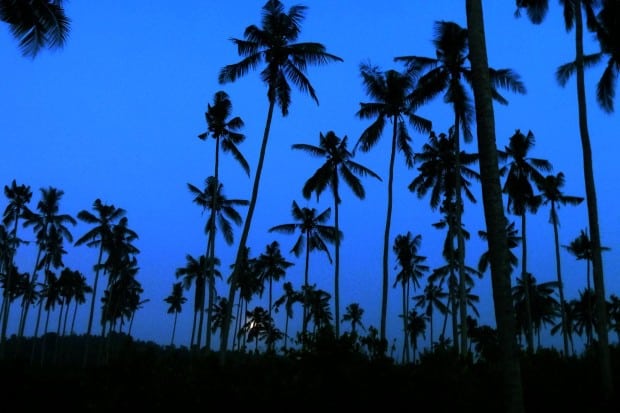
16. Other Risks
Traffic: is pretty crazy. Due to the low speeds there are not really a lot of accidents but the greatest risk you will face in Bali is probably on the road.
Pollution: heavy traffic and a lot of old trucks = smoke and gases. If you blow your nose after a 45 min drive you will see black. Some people wear simple filter masks because of that.
Ben Chong: they are not really a danger, but still needed to be mentioned. Not every girl you meet at night is really a girl. During the hustle and bustle of nightlife hedonism you will also meed guys who have changed sex (or are in the course of changing it) – meaning a girl can have the three legs. Giveaways are: Adam’s apple is an ever-present companion, watch for strong biceps, deep, husky voice, three legs and similar signs. Most commonly seen in Double six club or in internet cafes after midnight.
Crime: Not a huge issue in my experience. Watch out for those empty streets and drunken tourists late at night, I’ve heard of a few robberies. Otherwise use common sense – do not leave things lying around, do not take to much stuff to the beach if you are going surfing and things locked under the seat of your scooter are not safe.
Corruption: as a tourist, you are usually the one to blame if something happens. Because you have money. Suppose you are without a helmet – cop will stop you as soon as he sees you. Even if there will be like 20 locals without helmets passing him by. If a cop stops you have some small banknotes in your pocket, give him 50.000 and say that’s all you have. Otherwise cops are very friendly and will gladly show you directions and things like that.
Diarrhea: not so big of a problem – more or less you can eat everything and and everywhere. Sometimes it’s Bali Belly time but it’s almost never as bad as in Morocco for instance.
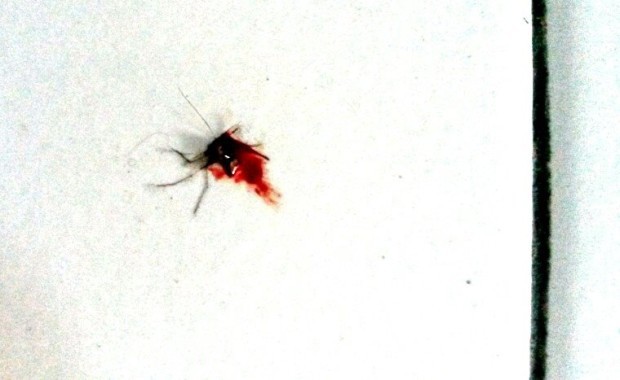
Mosquitos: There is no malaria in Bali (but nothing is 100%) but mosquitoes also carry dengue fever virus which can range from pretty bad flu to “go to hospital”. What to do? First kill all the mosquitoes in your room. This will solve 90% of mosquito problems. Get a few anti insect spirals to burn (though I must say this never really worked for me), get the mosquito net for the bed, use mosquito repellent (especially in the evening, morning and during the night), wear long sleeves and trousers in the evening. If you are really careful you can almost avoid getting bitten.
Drinking water: I always drink from the bottle but you can eat salads, drink juices and wash your teeth with tap water.
Ice: Apparently, all the ice on Bali comes from the official plant under government control, so you can use ice everywhere you go (is this an urban legend :)?). Well…so far there were no problems with drinking drinks with ice.
17. First Aid
Take with you:
- something for the pain and fever (paracetamol)
- some antibiotics,
- medical charcoal for food poisoning,
- iodine or even better Chinese medicine for reef cuts,
- some medical tape, Steri-strip,
- high SPF sun block.
18. When It’s Flat – What To Do In Bali?
Since this is a surfing guide I won’t go much into details what to see and do when it’s flat. I’ll just give you some ideas. For more info check out Lonely Planet guide or something like that.
Things to see:
- Temples Uluwatu and Tanah Lot,
- Ubud and Monkey Forest,
- a traditional dance in Ubudu,
- paddy fields in the interior of the island,
- volcano and lake,
- trekking,
- Bali Zoo,
- shopping in Kuta,
- party in Kuta,
- visit Nusa Dua,
- public boat from Sanur to Nusa Lembongan
- scuba diving and snorkeling in Nusa Lembongan and Nusa Penida
- scuba diving the shipwreck in Tulamben,
- north beach (Lovina ),
- Goa Gajah elephant cave,
- waterboom park in Kuta,
- massage,
- etc…
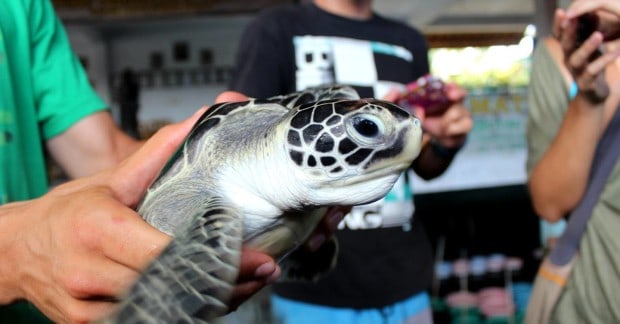
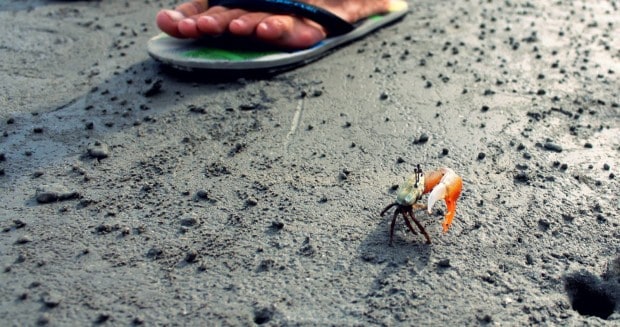
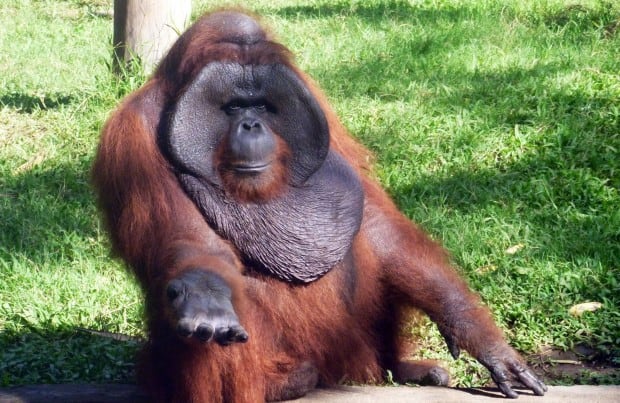
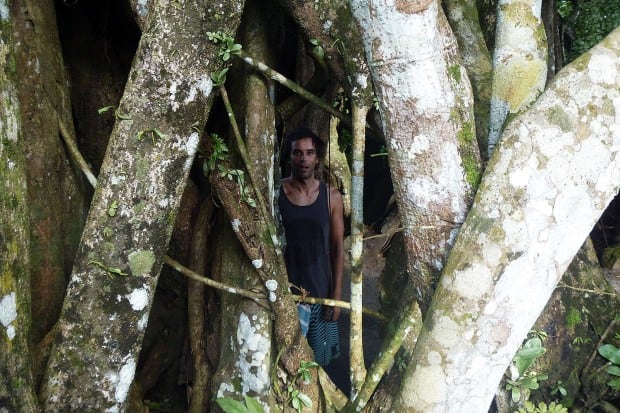
19. Indo Surf Dictionary
ya – yes
tidak – no
tidak gula – no sugar
primakasi/terimah kasi – thank you
pantai – beach
jallan – road
sampa jumpa – see you (bye)
satu – 1
dua – 2
tiga – 3
empat – 4
lima – 5
enam – 6
tujuh – 7
delapan – 8
sembilan – 9
sepuluh – 10
Hati-hati – careful
ombak – wave
etc …
20. Karma, Drugs And Other Matters
In Bali, there are two worlds, the world of Caucasians and the local world. Only if you are a good person and you get to know the local people for real – only then you will see what the local world looks like. But don’t look for it in Kuta, here you are just a dollar bill. Still even in Kuta people are friendly and like to have fun, like to smile and if you tease them a little bit in a good way of course, and make them smile – good things will happen to you and you will be care free.
Drugs are illegal and penalty is high so better not even think about it. Only mushrooms are kind of legal in Kuta and many bars sell shroom cocktails. You can also find these mushroom in the jungle but no white man goes there alone. On Gilly islands you can get weed as well as mushrooms – there are no cops there. But the grass is really lousy.
Balinese believe in magic. You better keep that in your mind because over there magic can work. It doesn’t work where we come from but over there it can! So do not fuck with locals and be a man of your word. Don’t lie! For instance drive a hard bargain but keep your promises. If you say that you will bring money for one t-shirt tomorrow, bring it tomorrow – even if it is only $1.
Otherwise bad things can start to happen – bad karma. Seriously! If you are good, spread good karma, then good things will start to happen.
Bali island is officially positive energy island. If you act normal you won’t even notice it. But Lombok, on the other hand, it is dark magic. There, people will cut of the head of the chicken to put an “evil” spell on someone. If you bargain to hard and suggest to low prices they will give you an “evil eye” even threaten you. So be careful and respectful.
Oh…and one last thing, don’t wear a green bikini or boardshorts when going into the ocean. Nothing predominantly green or pure green.
PS: All comments, additions, corrections are welcome in the comments
PPS: you can find more Bali photos from my trips here and here (this one also has some Sumatra).

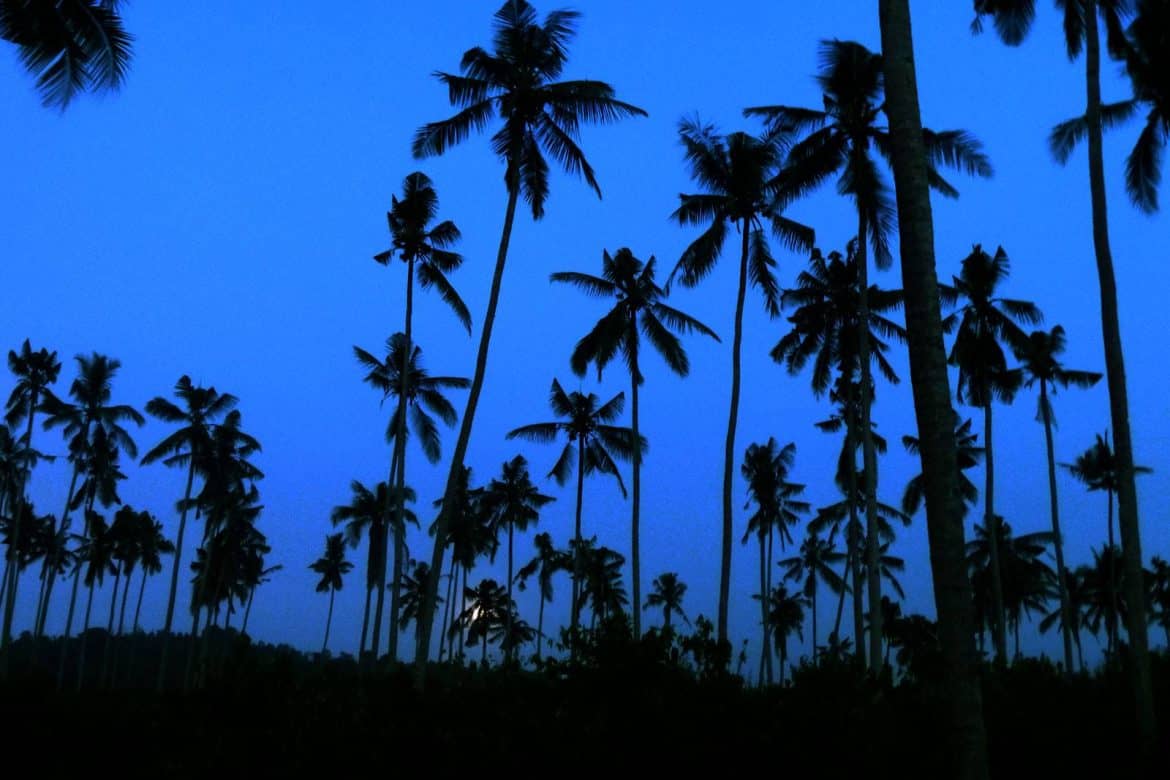
Hey man. Amazing guide. Will be printing this off for myself when I go in August. One thing though. Why did you mention avoiding wearing green stuff when surfing?
It’s just superstition :). Balinese believe that there is a sea princess that is attracted to green color and will try to lure anyone wearing green into the oceans depths.
Yeah but also it makes you harder to see if you get in trouble swimming, for instance. So maybe there’s a little logic mixed in with the superstition.
Great review! – One question…Why no green boardies?
Tom, check the previous comment:)
Green board shorts bring bad luck. NEVER wear them in the surf there are too many stories of ill fate whilst wearing green boardies. I got cut to ribbons surfing Sanur at mellow four to six foot. Three stitches later and antibiotics l went into anaphylaxis shock and was minutes away from brain damage or worse. Long time Ulu’s surfer wearing green boardies mysteriously drowned at playful Uluwatu and washed up near the cave with a sea snake wrapped around his leg. DON’T wear green boardies.
awesome work mate. just on way home from NZ to pick up new board then jetting off to Indo tomorrow, so this has been super helpful. will have to check the rest of the site out now!
Dude, amazing write-up!! Hands down, the best I’ve seen so far! You’ve got it all covered. Will definitely be referring to this for my 2 week trip in March. First time to Bali. I will leave my greenish board shorts at home!
Thanks M, have fun, Im sure you’ll love it.
Hey man, I run into your guide looking for that special Chinese medicine. I’ve been to Bali before, remember it worked wonders, now I’m trying to find it but outside Bali I’m just getting blank stares when asking for it. Any pictures, names, anything? Thanks!
Hey Filip, if you are talking about the reef cut thing – it’s called Tieh ta yao gin or also Die Do Yao Jing. There is a picture of the bottle towards the end of the Bali guide. I always get a few to take home, I’m not sure you can get it outside of Asia?
I have a green surfboard :/ … is that gonna be a problem?
Not if you put 360guide sticker on it! :)
Haha, ;)
Best page i’ve read about tips in Bali in the WEB. Congrats!!!
Solid, thanks for this!
hey man, just to know best way from Denpasar airport to Balangan we are two and have 1 surfboard, dont want taxis fuck me with price.
Download the Blue Bird Taxi app and use it to get a taxi instead of going to the airport taxi counter.